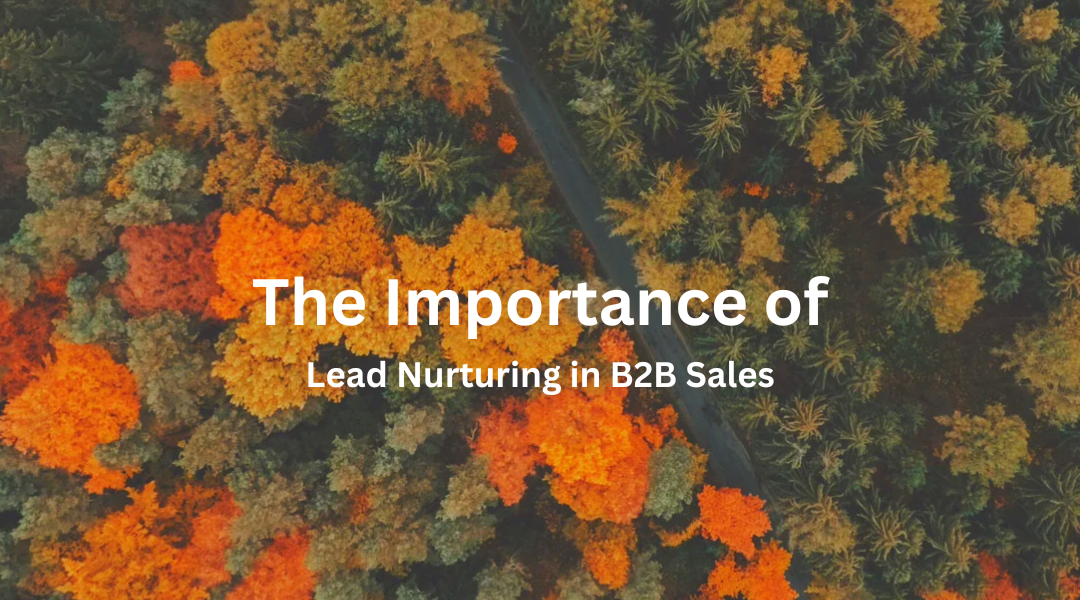Lead nurturing is a critical component of the B2B sales process. It’s that “weird middle ground” where you continue to engage potential clients who may not be ready to make a purchase just yet but still show promise. The goal is to remain top of mind, build a relationship, and position your solution as the best fit for when they are ready to buy. Let’s break down the key elements of an effective lead nurturing strategy, focusing on how it applies to the B2B world.
Sales and Marketing Alignment: The Foundation of Lead Nurturing
One of the most important aspects of lead nurturing is the alignment between sales and marketing. These two teams need to work hand in hand. Too often, sales and marketing operate in silos, missing the opportunity to collaborate. However, in the nurturing stage, this partnership is crucial.
If the sales team knows a client’s communication preferences, pain points, and objections, this information should be shared with marketing. Marketing, in turn, can create content that specifically addresses those concerns. Whether it’s an email campaign, webinar, or case study, marketing should be arming sales with the tools needed to guide potential clients through the sales funnel.
Sales enablement thrives on this synergy. The sales team gets the right content at the right time, while marketing gains valuable insights into what resonates with the audience. When sales and marketing work together, lead nurturing becomes much more effective.
Understanding Pain Points and Objections
Every interaction during the nurturing phase should focus on addressing the customer’s pain points and overcoming objections. These challenges might include issues like cost, timing, or internal decision-making processes. Perhaps the prospect only makes purchasing decisions at specific times of the year, or they need approval from a board or senior leadership team.
It’s essential to understand both your sales cadence and the customer’s decision cadence. The nurturing process is about more than just repeatedly following up—it’s about strategically addressing the hurdles that are preventing a deal from closing.
For example, if budget is a concern, share content that demonstrates the long-term ROI of your solution. If timing is an issue, offer flexible implementation options. By proactively handling objections, you’ll be in a better position to move the prospect closer to making a decision.
Educating Your Leads: Keeping Them Engaged
In the middle of the funnel, education is key. Your prospects need to be constantly learning about how your solution can solve their problems. This is where webinars, demos, and speaking engagements can be incredibly valuable.
The content you provide during the nurturing phase should be easily digestible and directly address the prospect’s pain points. It’s not just about staying top of mind—it’s about offering real value. When prospects understand how your solution addresses their unique needs, they’ll be more likely to engage further.
For instance, a webinar that breaks down a common industry challenge and shows how your product solves that issue is more likely to resonate than a general sales pitch. Demos that highlight specific features relevant to the prospect’s business can also help them visualize how your solution will fit into their day-to-day operations.
The goal of this educational content is to keep your prospect engaged and to provide them with the knowledge they need to make an informed decision. The more they understand the value you offer, the more likely they are to choose your solution when the time comes.
Consistent Interaction: The Key to Building Relationships
Lead nurturing is not a one-time effort. It requires consistent, meaningful interaction. Simply sending out cold emails or generic marketing materials won’t cut it. If you’re not getting a response, it might be time to reassess your approach. Are you truly engaging with your prospects, or are you just broadcasting information?
B2B sales is a contact sport, and nurturing is no different. You need to track your interactions and ensure that each one moves the prospect closer to a decision. Every touchpoint should address a pain point or offer valuable insights. The more personal and relevant your communication, the more likely you are to build a relationship.
Moreover, it’s important to remember that the decision to change—whether it’s switching providers or adopting a new solution—comes down to pain. The cost and pain of changing must be less than the cost and pain of staying the same. If staying the same is more painful, prospects will be more inclined to make a move.
Your job during lead nurturing is to illustrate how your solution reduces their pain. The key to success is in demonstrating how your offering not only solves their problems but does so in a way that is more efficient or cost-effective than their current situation.
Tailoring Your Approach to Multiple Stakeholders
In B2B sales, you’re often dealing with multiple decision-makers, each with their own priorities and pain points. Lead nurturing must account for these various stakeholders. One size does not fit all, and that’s why it’s important to personalize your approach.
For instance, the CFO may be focused on cost savings, while the department head is more concerned with efficiency. Your content and communication should be tailored to address the specific concerns of each stakeholder. Demos, case studies, or white papers may be more effective for one group, while webinars or one-on-one consultations work better for another.
The more personalized your nurturing efforts, the better you can address the unique needs of each decision-maker, increasing the likelihood of closing the deal.
Focus on Solving Problems, Not Selling Features
At the heart of lead nurturing is problem-solving. Your prospects don’t care about the flashy features of your product or how long your company has been in business. What they care about is how you can solve their problems.
Every interaction during the nurturing phase should focus on this. Address their pain points, provide relevant and educational content, and consistently interact with them in a way that builds a relationship. By following these steps, you’ll not only stay top of mind but also position your solution as the best fit when they’re ready to make a decision.
Book Recommendation
Try reading Hooked: How to build habit forming products. It’s an interesting read on how companies influence behavior to bring people back to their goods or services with less effort. Something that a lead nurturing campaign could benefit from.



